Behind the scenes of Fender Custom Shop's bass creations
We visited Fender’s Custom Shop in Corona, California for a peek behind the curtain and some pearls of wisdom
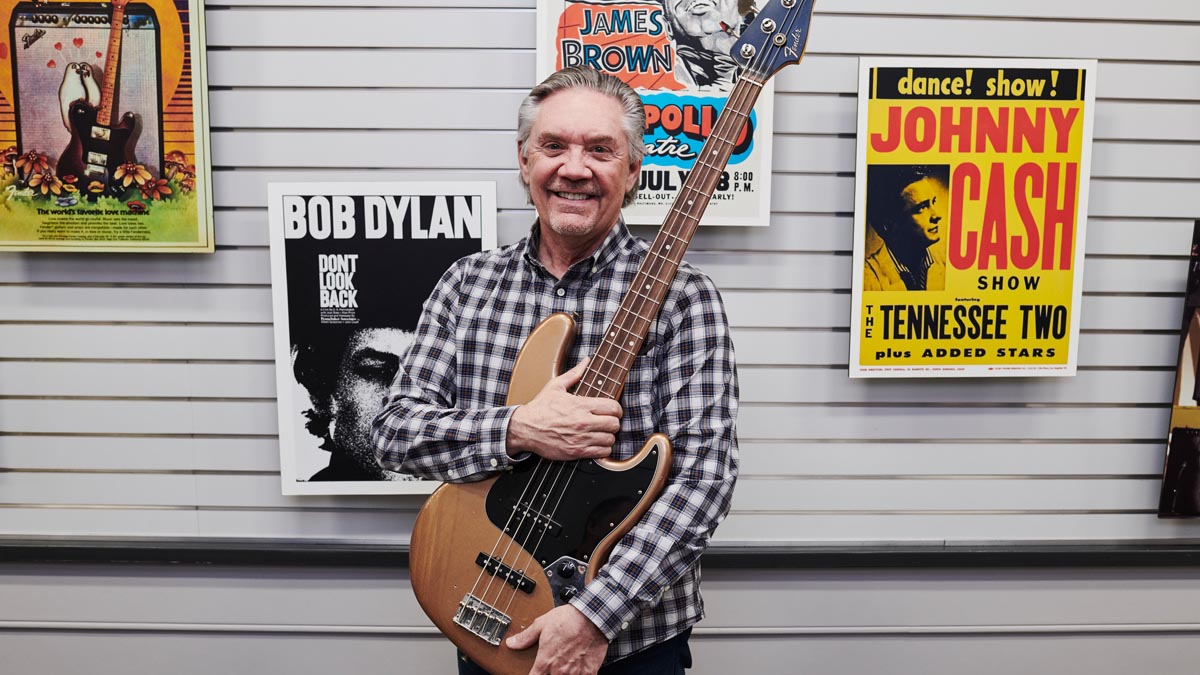
In the pandemic-stricken era in which we find ourselves, the word ‘Corona’ is often followed by the word ‘virus’, sadly.
However, cast your mind back a few months and you’ll recall that in bass world, ‘Corona’ has a far more cheerful application in the name of the California city where Fender has its Custom Shop.
That, friends, is where we found ourselves a while back, for a tour of the facility courtesy of Chris Fleming, Director of Custom Operations.
On arrival, our friendly Fender rep informs us of a few ground rules – wear safety goggles, stay inside the yellow lines, don’t disturb the Master Builders – all of which make eminent sense given that the factory is full of powerful machinery and that the staff are working on bass guitars that cost several thousand dollars each.
Chris then takes over and shows us around the factory, as the following pictures reveal, before we sit down in his office for a chat about life at the Big F.
The most popular bass we make is probably the Jazz, overall, but from my point of view, Fender’s most important invention was the P-Bass. It changed music
Chris, approximately how much of the Custom Shop’s output is bass?
"I don’t know exactly, but I’d say 20 to 25 percent is bass. There just aren’t as many bass players. Look at my tattoos: I have one of a Telecaster which says ‘Live To Play’ and this one is of a '50s P-Bass which says ‘Play To Live’."
Get The Pick Newsletter
All the latest guitar news, interviews, lessons, reviews, deals and more, direct to your inbox!
That’s wisdom, right there.
"It is, because if you really want to be a working musician, you should play bass. And be good at it, of course..."
When we make a bass, you’re gonna have a much better chance of getting a really, really good one
What are the specific challenges with making basses that you don’t get with guitars?
“The biggest challenge with bass, especially with Fender basses, is the design of the neck. With the early Fender basses, they didn’t think through how small and flexible the neck is, especially with the Jazz bass.
“With the early ones especially, you have to be really careful, so that’s why all of our basses have quarter-sawn necks, because it really helps to stabilize them. But other than that, they’re not a whole lot different as far as the process goes. The necks are definitely our biggest trouble.
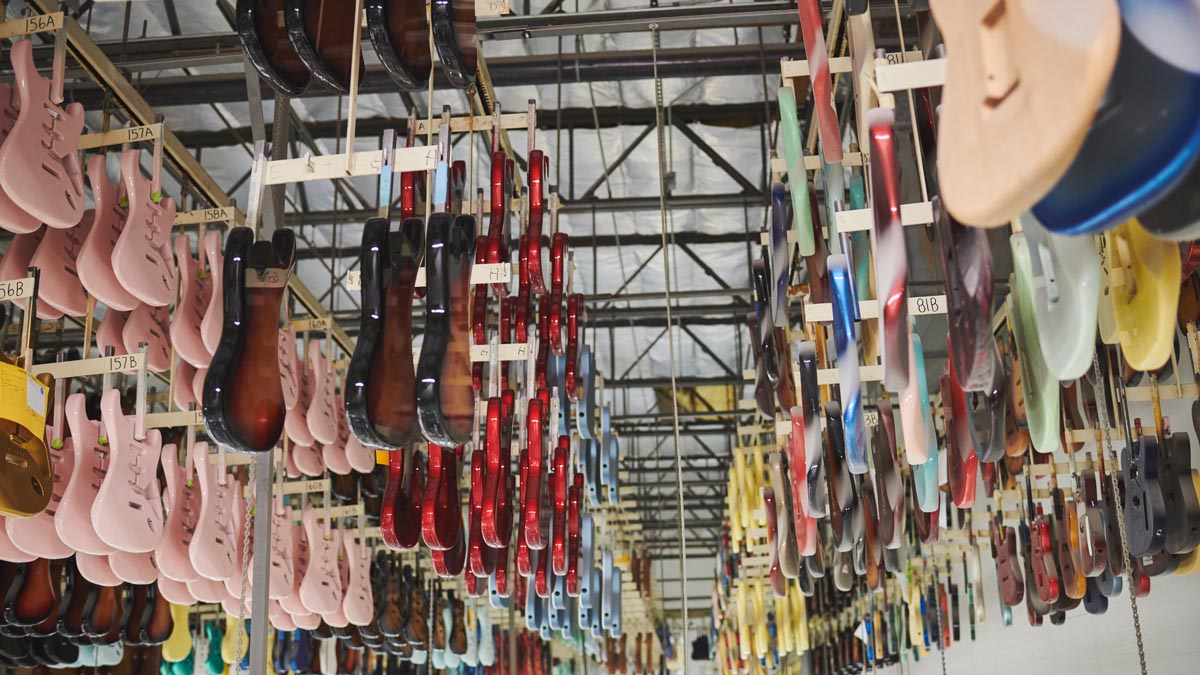
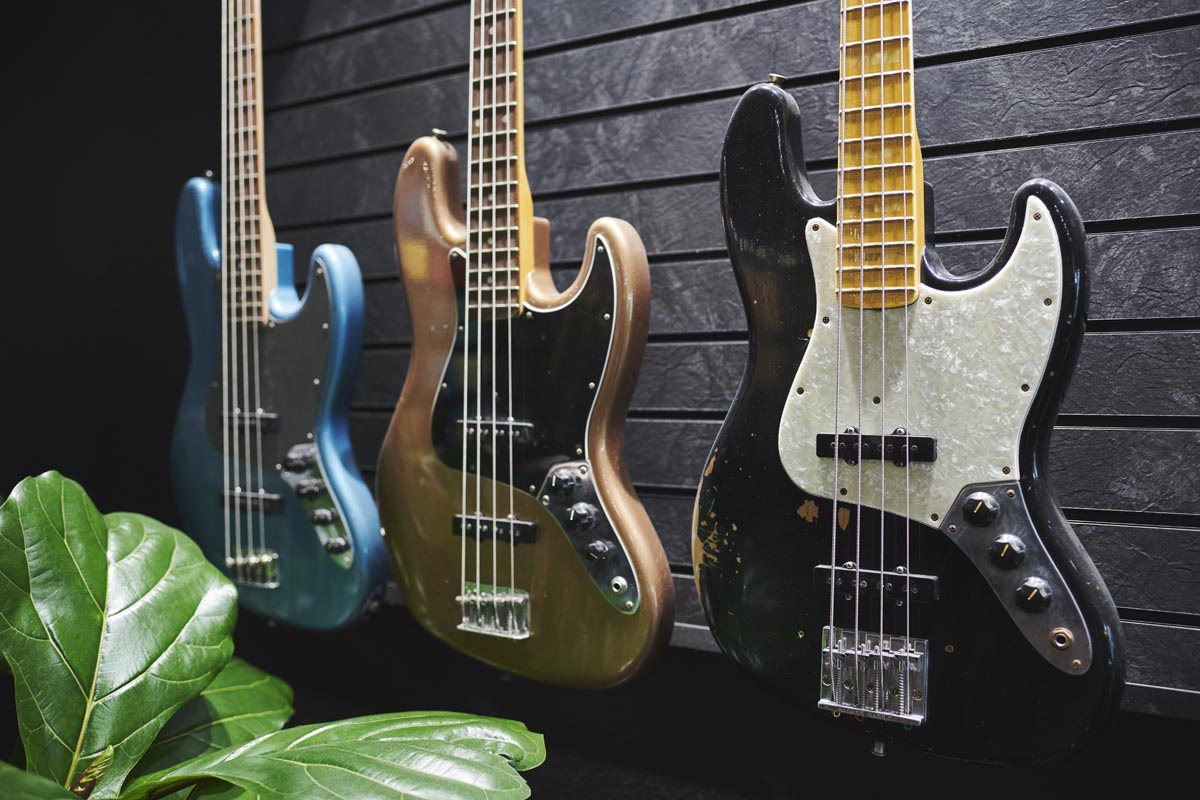
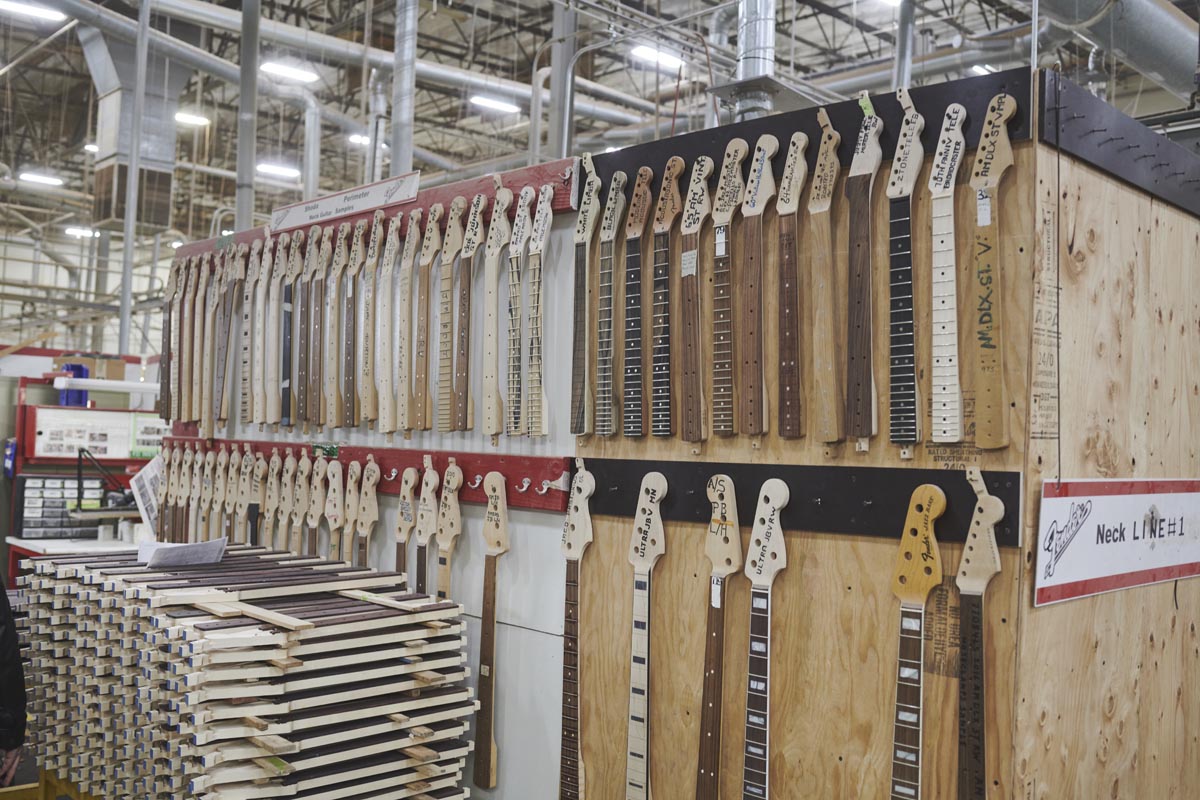
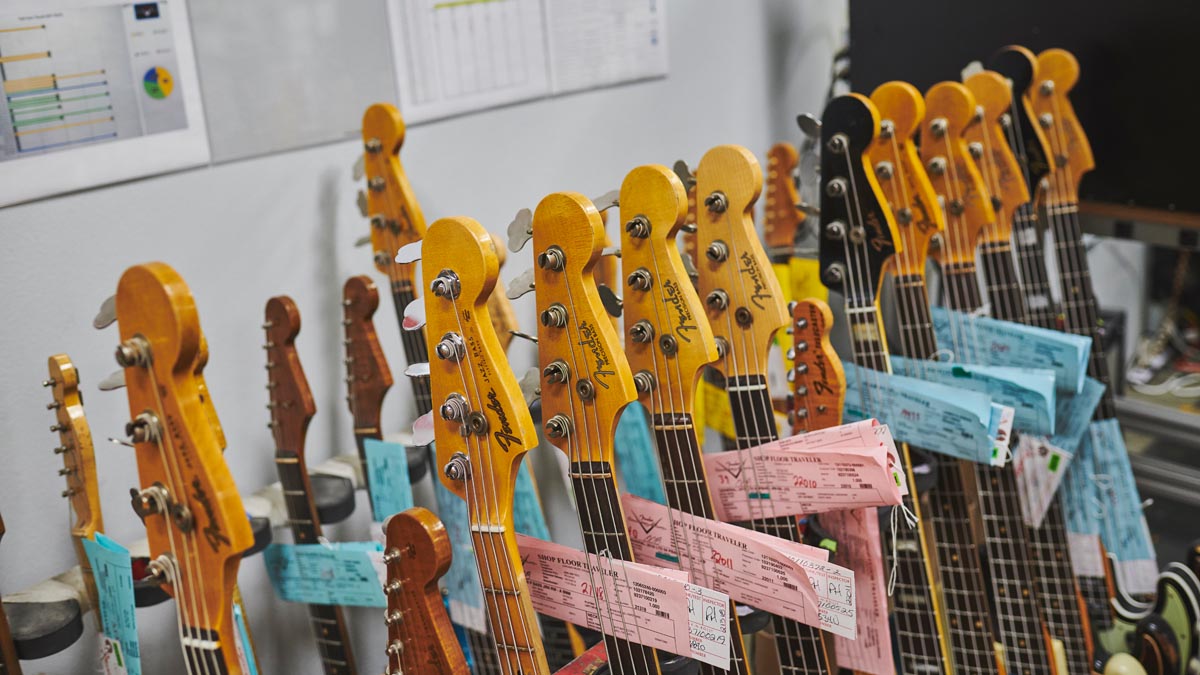
Are bass players’ requirements changing as the years pass?
“No, I wouldn’t say so. Bass players are a lot more practical and less conservative than guitar players. They’re open to new things – new sounds, new shapes, new materials and so on. I’d much rather make a bass for somebody than a guitar for somebody. Bass players are a lot less persnickety. I don’t think bass is as much of a fashion statement as guitars are.“
How much of your output is five-string?
“Very little. We don’t make many five-strings in the Custom Shop at all, although we have done in the past. The Custom Shop is largely vintage-based, or vintage-modified stuff.“
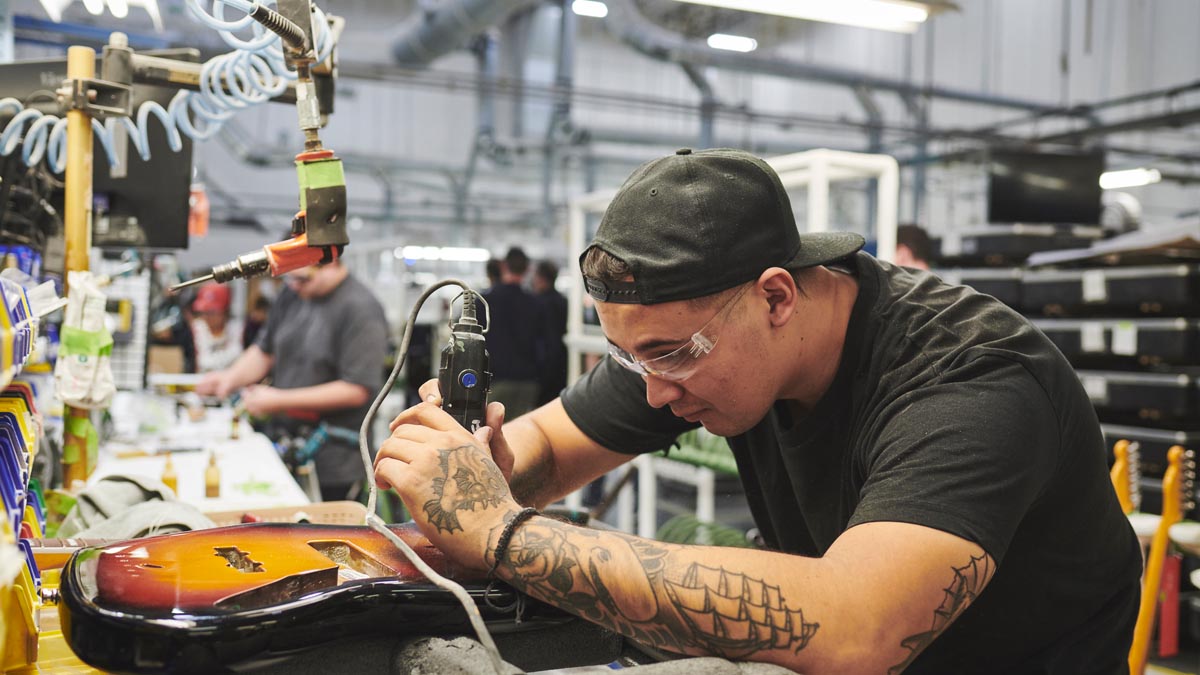
An American-made bass remains the gold standard, just as it always has been, but production quality of overseas-made basses has increased hugely over the decades. Is it as important as it once was to have an American-made bass?
“That’s a good question. The difference with the Custom Shop is that we spend more time, and we’re more choosy about the materials we use – and there’s the level of craftsmanship that we have. When we make a bass, you’re gonna have a much better chance of getting a really, really good one.
“But, you know, every instrument has its own thing going on, and I’d agree that these days instruments made in other countries are much better than they used to be. I recently bought an Ibanez guitar for $500, and it’s a really great little jazz guitar. Now, I can make a nice jazz guitar here if I want to, but I wouldn’t be able to do it for $500.“
Our reviewer of your recent Squier 60s Jazz swears it’s as good as the real thing.
“Yes, I wouldn’t be surprised. Part of that is due to us [the Custom Shop], because we have folks who go to all the factories and help them improve what they do for us. I did that for about five years myself. We started asking for more exact specifications, and they’re doing that for us, so the stuff that’s coming from there now is really good.“
Fender remains the world’s best-known electric guitars and bass brand. Is that primarily because you guys were first?
“I think that’s definitely a part of it, but I also think that the designs of the instruments were really useful for musicians, and they looked extremely cool too. It all happened in the right time and at the right place. Music was blossoming – country and western, surf music, and then rock. It was also a lifestyle, so it’s all connected. People saw Fenders being played on TV.“
Which sells more, the Jazz or the Precision?
“The most popular bass we make is probably the Jazz, overall, but from my point of view, Fender’s most important invention was the P-Bass. It changed music.“
How far ahead do your orders go?
“We’ve found that the sweet spot is about six to seven months for teambuilt guitars, and for a couple of the masterbuilders, they have about three, three and a half years of orders. A masterbuilt guitar takes nine to 18 months, although it depends. Most of the folks that buy custom-built guitars from us are dealers. We’re doing really well right now. There’s still something aspirational about a Fender guitar.“
If you could choose any single Fender Custom Shop bass to play yourself, which model would it be?
“I’d actually choose a P-Bass, but with a Jazz neck. I made a bass to that specification for myself and it’s really great. I could have built a standard Precision, because I really like the shape and the feel and the pickup of the P-Bass, and the punchiness of the tones that it has, but the thinner neck of the Jazz is really comfy.“
Joel McIver was the Editor of Bass Player magazine from 2018 to 2022, having spent six years before that editing Bass Guitar magazine. A journalist with 25 years' experience in the music field, he's also the author of 35 books, a couple of bestsellers among them. He regularly appears on podcasts, radio and TV.
One of the UK's biggest guitar stores has sold its stock and website to online retailer Gear4music for $3.2 million – after weeks of speculation over its future
“These measures threaten the economic and cultural impact of U.S.-made musical instruments”: NAMM president responds to Trump's tariffs – urgently urging the administration to exempt the musical instrument market











